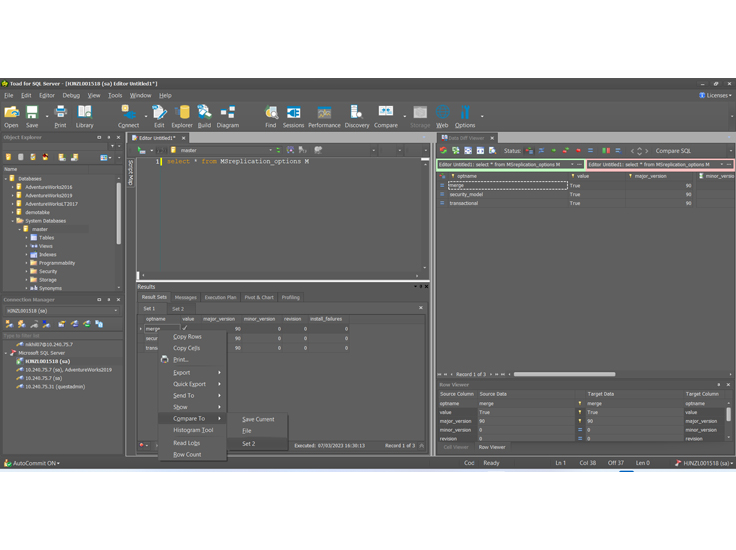
This will start a wizard that will guide you through the process of creating the DacPac and saving it to disk.

To create a DacPac, we use DacFx, which is already installed together with SQL Server, so all we need to do is right-click on the database and navigate Tasks | Extract Data-tier Application. If the DBA can provide the latest DacPac for the production database, you can still use SQL Compare to compare and synchronize two DacPacs, and can also use SQL Compare command line, or DacFx, to extract a database build script from the DacPac. In these cases, the database administrator will often use DacPacs, together with DacFx, as an alternative way of scripting out a database, and deploying database changes. In certain environments, however, security regulations prohibit direct access to the production database, via tools like SQL Compare. My previous articles have shown several ways to achieve this, by comparing directly to the production database, using SQL Compare GUI or command line. You also need a way to compare your current development database or script directory, to a target production database, and generate a synchronization script that would align the two.

Often during development work, especially at the proof-of-concept stage, you need a quick and easy way to save your current progress, for example by updating a set of object build scripts in a directory. As you can see, among other things, it contains an XML ‘model’ of the database’s metadata ( model.xml).įigure 1 Why compare databases using DacPacs?
Sql server client comparison zip#
zip to open the file and see what is in it. Since a DacPac is just a zipped bundle of files, we can simply rename the extension to. It is very useful for sharing and migrating database definitions in a very compact way and is compatible with SQL Server Data Tools and Azure Data Studio. What is a DacPac?Ī DacPac file is a binary file, a zipped directory, containing definitions of all the objects in a SQL Server database.

Sql server client comparison how to#
I’ll show you how to use Data-Tier Application Packages (DacPacs), together with the Data-Tier Application Framework (DacFx), as an alternative way of comparing databases schemas, scripting out a database, and deploying database changes, in cases where SQL Compare can’t get direct access to the production database. Outside of his day-to-day schedule, he blogs, shares tips on forums and writes articles on his Data Messenger blog. In the past 3 years, he has expanded his focus to coding in R for assignments relating to data analytics and data science. Feodor has worked with SQL Server for over 15 years, specializing in database architecture, Microsoft SQL Server data platform, data model design, database design, integration solutions, business intelligence, reporting, as well as performance optimization and systems scalability. This is a guest post from Feodor Georgiev.


 0 kommentar(er)
0 kommentar(er)
